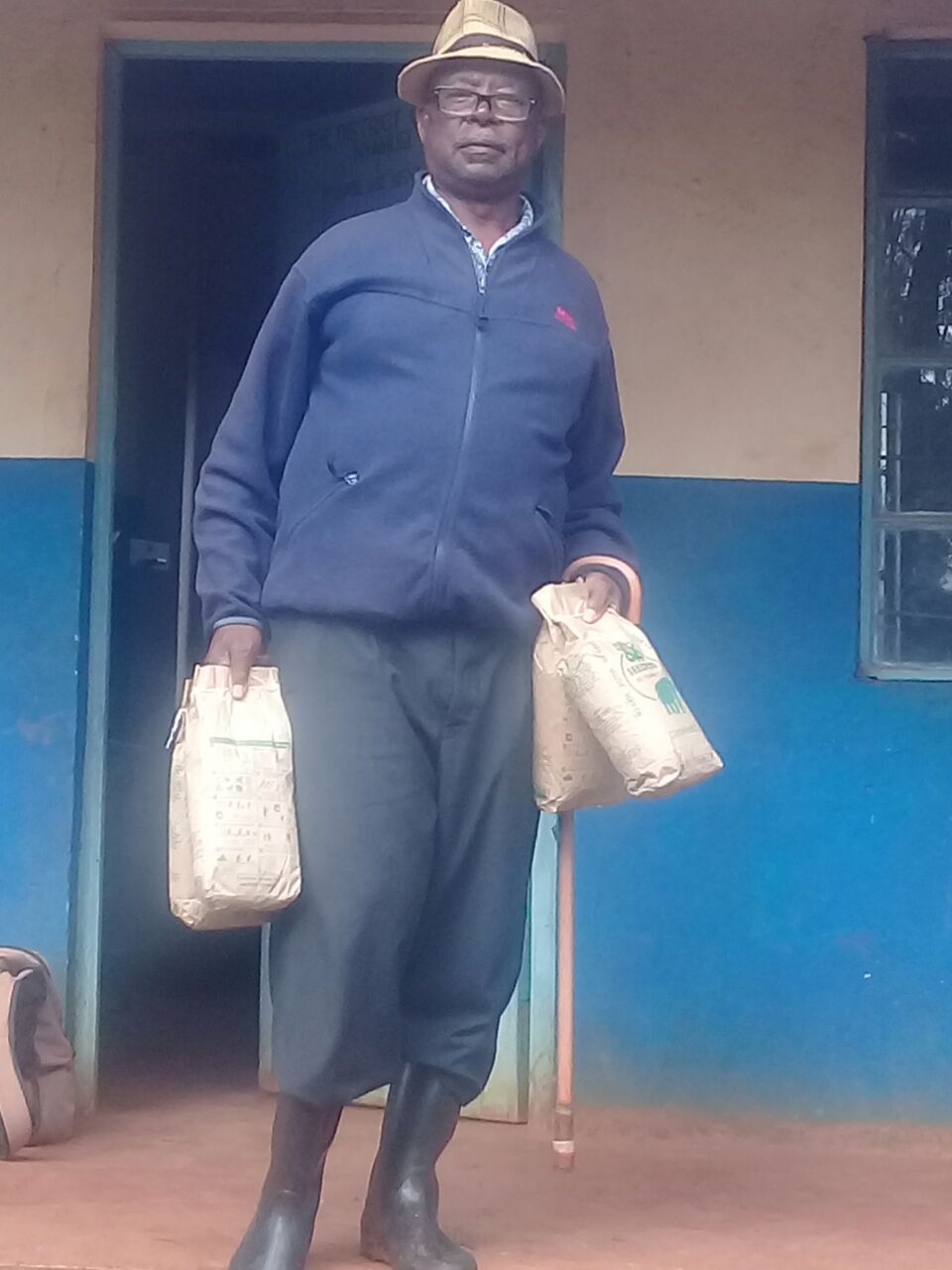
A farmer carrying parkets of seeds. Farmers should be careful of to procure their seeds from registered and accredited stockist and suppliers to avoid bad traders who may sell them fake seeds. Photo courtecy.
Kenya Seed Company has released over 40 maize varieties tolerant to drought, diseases and Striga weeds which are suitable for the country's various agro-ecological zones and can help farmers produce more despite erratic climatic conditions.
The maize varieties which have undergone five to six years trials also have better yielding capacity than indigenous maize varieties and will be available for planting by farmers this planting season.
“Other than being tolerant to tough diseases and conditions, the new maize varieties can yield 28-30 bags of maize per acre than the indigenous types which yields about 10-15 bags an acre,” said Mathew Mwarey, Kenya Seed Company agronomist.
RELATED STORY: Fake seeds choke farms and earnings
Some of these new varieties include H528 (Ua Kayongo) and H530 and H531 (Ua Kayongo) which were developed from the company’s small plant in Endebes in Kitale to help combat Striga weed menace in Nyanza and western regions.
The Ua Kayongo varieties are tolerant to herbicide imazapyr. The herbicide is used to coat the seeds which are then planted. When seeds germinate into seedlings and grow into maize plants, the herbicide enables the plants kill Striga weeds at the root zone.
“It does not mean that farmers who plant these varieties of maize are guaranteed of a free-striga-weed farm. The weeds might be there but will not affect the plants because they are destroyed at the pants’ root zones,” said Mwarey.
“The herbicide coat can kill other plants too, therefore farmers are supposed to wash their hands well before handling other seeds during planting.”
RELATED STORY: How to identify genuine maize seeds this planting season
Ua Kayongo takes three months to mature and it can yield over 28 bags per acre depending on the farmers’ agronomical practices.
Other maize seed varieties include KSDV01 and WE1101 varieties which are suitable for arid and semi-arid areas and for water insufficient areas and those prone to drought.
These varieties have rough leaf surface which enable them to regulate the amount of water lost through transpiration. They are also shorter in height making them require less amount of water to sustain their growth.
“These variety of maize can do well in dry areas which receive limited amount of rainfall in a year,” said Mwarey.
RELATED STORY: How to spot fake seeds in the market
Places like Bomet in South Rift regions, Kisii in Nyanza and some parts of central Kenya regions which are prone to MLN deserve maize varieties such as H12ML1 (H6506) and H13ML2 (H6507), HMZ1202 (H529).
These varieties according to Mwarey are still under seed multiplication thus farmers may not plant them this season but wait till Augus-October planting season when they will be available.
RELATED STORY: Dryland Seed Limited to aid Kitui farmers increase green grams yields to 900 kgs
For farmers from western region, Kenya Seed Company has branches in Kakamega and Bungoma where farmers can buy the seeds or from the company’s sales agents or extension offices near them.
“Farmers should be careful of to procure their seeds from registered and accredited stockist and suppliers to avoid bad traders who may sell them fake seeds.”
















Comments powered by CComment